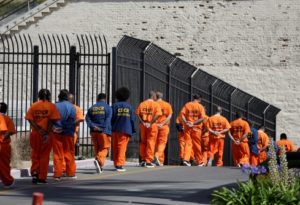News
For more than 165 years, political battles in California have played out almost entirely within the framework of a two-party system. There are signs that may be changing. Differing ideologies within each party are competing for money, supporters and attention. Out of it all, four major, distinct political tribes seem to be emerging.
News
East Bay lawmakers are pushing a bill to stop Sutter Health from shuttering its Alta Bates Summit Medical Center in Berkeley — a measure with major statewide implications. The bill was prompted by issues surrounding Alta Bates, but it would apply to any emergency rooms across California run by nonprofits.
News
Should customers be able to lease dogs and cats in the same way they rent cars, apartments or furniture? California legislators think not. Both houses overwhelmingly approved Assembly Bill 1491, which would outlaw the practice beginning Jan. 1. The bill is now awaiting final action from Gov. Jerry Brown.
News
Much of redistricting law is arcane and technical. But often what seems like a little detail can become a significant factor in how the lines will be drawn. Take, for example, prisoners. The U.S. Census counts prisoners just like any other part of the overall population. The Census captures people at their “usual residence,” meaning the place where they live and sleep most days.
News
Sites Reservoir has been talked about for decades, but now that project officials — and backed by 70 major allies — have formally submitted an application for state bond money, the question arises: Will this $5 billion project actually come to pass? The proposed surface reservoir would be located in Colusa County, but is competing with 11 other applicants for part of a $2.7 billion coffer of state money devoted to water storage projects.
News
Just who ARE all those people on the cover of this year’s Top 100? Inspired by The Beatles’ Sgt. Pepper’s album cover, Capitol Weekly staff collected a myriad group of political figures and otherwise notable Californians. Below is a numbered “Who’s Who.”
1. Culbert Olson, Governor of California 2. Anthony Kennedy, Justice, Supreme Court of
News
It’s time again for Capitol Weekly’s Top 100 list, as subjective a ranking as exists anywhere in politics, and one that sparks wildy diverse reactions – even some that are positive. “Dear God, you’re not doing that again,” said one. “You’ve got people on that list who haven’t been in the building (Capitol) in years… go get some new blood!”
News
FairWarning: Just after noon on March 29, a pickup truck crossed the center line of a rural road in South Texas and slammed into a church bus, killing 13 members of the First Baptist Church of New Braunfels. A police report said the 20-year-old pickup driver, who survived, had taken medication and was texting. In other words, he was on two drugs, not one.
News
Former Assemblyman Willard Huyck is probably one of the more notable state legislators that you’ve never heard of. He was elected to the State Assembly at age 29 and served two terms before leaving to run a medical supply company. Now, more than 70 years after first arriving at the Capitol, Huyck is California’s oldest former legislator ever.
News
Just who are all those people on the cover of Capitol Weekly’s 2017 Top 100 Book? We’re having a contest to see if anyone can name all 59 of the Californians on the cover. The winner will receive a $150 gift certificate to Frank Fat’s! To enter, email your list of 59 names, using the numbers in the attached image as a guide, to: [email protected] by 5 p.m. Friday, Sept. 8, 2017.








